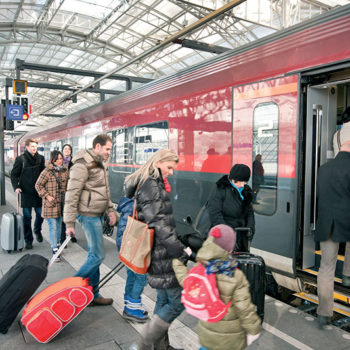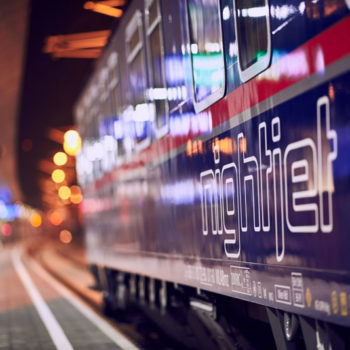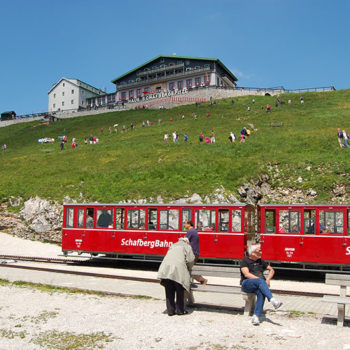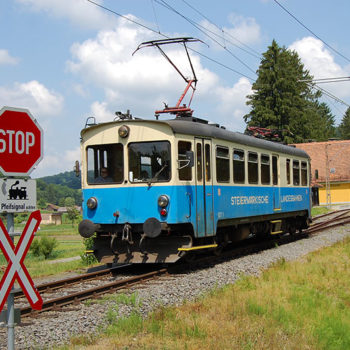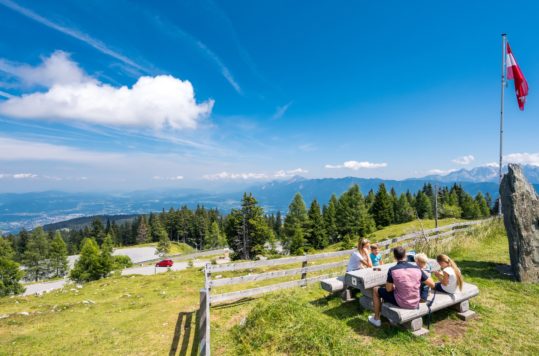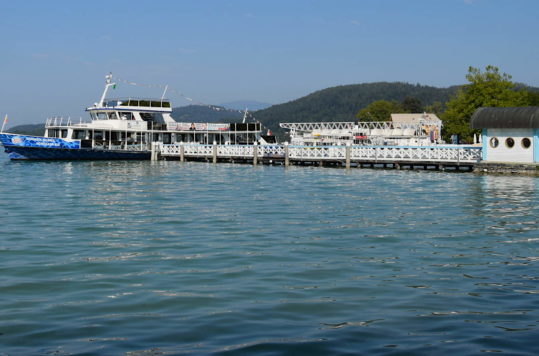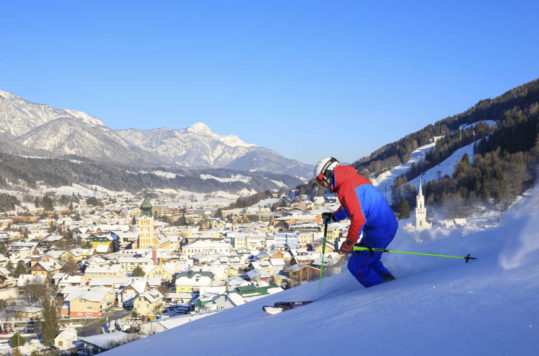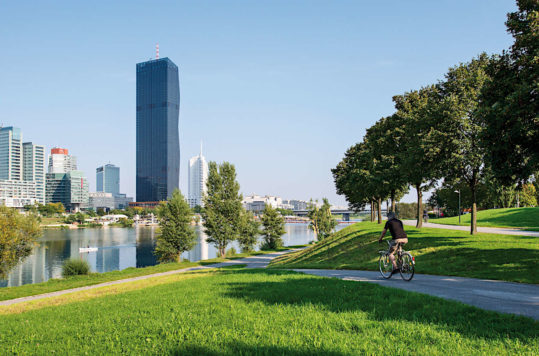Austria is a train travel country. You can enjoy everything from modern express trains through the Alps to nostalgic steam trains and mountain cog railways with unforgettable views.
With a total of 4865 km (3022 mi) of train tracks, Austria has a relatively well-developed rail network. In comparison, Norway which is more than four times as large as Austria has 600 km of railway tracks. Trains are popular in Austria and at peak hours around 570 trains are on the tracks at the same time. Moreover, travelling by train in Austria instead of by car does not mean you miss some of the best countries can show – on the contrary.
From plane to train
The train journey can start as soon as you leave the aeroplane. If you fly to Vienna you can board a train directly, to for example Innsbruck, at the railway station at the airport. Nonetheless, we would always recommend that you stay a few days in Vienna, before travelling on to the next destination in Austria. Modern and comfortable trains make train travel a great way to see Austria. Moreover, trains are great for moving swiftly between the biggest cities, such for example Vienna – Linz – Salzburg or Vienna – Graz. A comprehensive schedule and frequent departures allow for lots of options. For example, the Vienna – Innsbruck route runs 12-14 times a day. The trip can take as little time as 4 hours and 14 minutes. Furthermore, on mainlines such as Vienna – Linz – Salzburg, the trains run at speeds of over 200 km/h (125 mph), making travel times short.
< Click on the images to enlarge >
Slow scenic routes
Express trains are not always the best way to travel. If the landscape speeds by the window, you can’t enjoy it. We have taken proper slow trains on several occasions. Such as the train between Fehring in Styria and Vienna. It took 3 hours and 20 minutes including a change at Wiener Neustadt. Nevertheless, what a great trip, as the train was winding itself slowly through small villages, cultural landscapes and forests. In tight turns, we were down to 30 km/h (19 mph). Allowing plenty of time to enjoy the scenery. The majority of the trip went through Styria and we came to see places you do not usually pass in a car. There are many such tracks in Austria, which you can either take as part of a long journey or as a day trip.
S-Bahn / Regionalzug
Regional and suburban rail (the so-called S-Bahn) systems are well developed. Most cities and larger towns have extensive local train coverage. These trains often take you to the smaller stations, where Intercity or Express trains do not stop. Usually, S-Bahn lines are found near major cities, as they are often used by commuters. Notwithstanding, these trains are also very useful for tourists for short-distance travel. Moreover, because the S-Bahn has more frequent departures than long-distance routes, it’s often a faster alternative to the bus.
Advertisement
Through the Alps
For those who are interested in more than just transport between points A and B, trains in Austria also offer scenic routes. One of the most scenic routes, between Innsbruck (Tyrol) and Feldkirch (Vorarlberg), takes you through the wild alpine landscape of Arlberg. The north-south route between Salzburg (Salzburgerland) and Villach (Carinthia) takes you through the Tauern massif. Even though the summer months attract the most train tourists to Austria, a midwinter rail trip may also be a good way to do your skiing holiday. Many of Austria’s most popular ski resorts, such as St. Anton, Zillertal, Badgastein, Kitzbühel, Seefeld, Zell am See and Schladming, are easily reached by train.
Three classes
Austria’s main railway company ÖBB offers three different classes on board the trains; Economy, First and Business Class. The biggest difference is more space, food service, seat reservations and extra service, the more you pay for the ticket. Most of the trains in Austria are modern and have ample space, even in economy class. Hence, there is no point paying for the more expensive classes, unless you feel the need to travel more extravagantly and enjoy a bit more luxury and tranquillity during the trip.
Nightjet
ÖBB also runs nightly couchette or sleeper car services between Austria and several cities in Germany, Switzerland and Italy. You can even bring your car or motorcycle with you on the overnight trains. This service saves you from long days on motorways through Europe, and you can enjoy a good night’s sleep on your way to next the destination. For more info, see more on ÖBB’s Nightjet website.
Special train trips
All around Austria you will find special tourist or museum trains that offer trips that run on tracks close to normal services. These trips range from the great historic steam train to local electric rail buses and to cog railways that take you up to mountain peaks. They are too many to mention all of them, but we recommend the Schafbergbahn. Since 1893 the cog wheel train has taken passengers from Lake Wolfgang and up to the Schafberg at 1783 metres above sea level. At the peak, you will get unforgettable views of the Salzkammergut. In a completely different type of landscape, the Gleichenberger Bahn carries passengers between the small town Feldbach and the spa resort Bad Gleichenberg in south-eastern Styria. Among the locals, the route is known as the “Jungle express” (Dschungelexpress). This is because the train travels through a mix of farming landscapes and dense forests on its 21 km long trip.
Trains for any occasion
No matter if you are on Interrail, self-made trips combining flights and trains or simply on a road trip, you have countless opportunities to experience Austria by train. Moreover, Austria offers train services, not just for hardcore train enthusiasts, but for the entire family. Whether you are looking for a nice getaway with the kids for a few hours, or if you need fast and modern transport from A to B, the Austrian railways are the way to travel.

